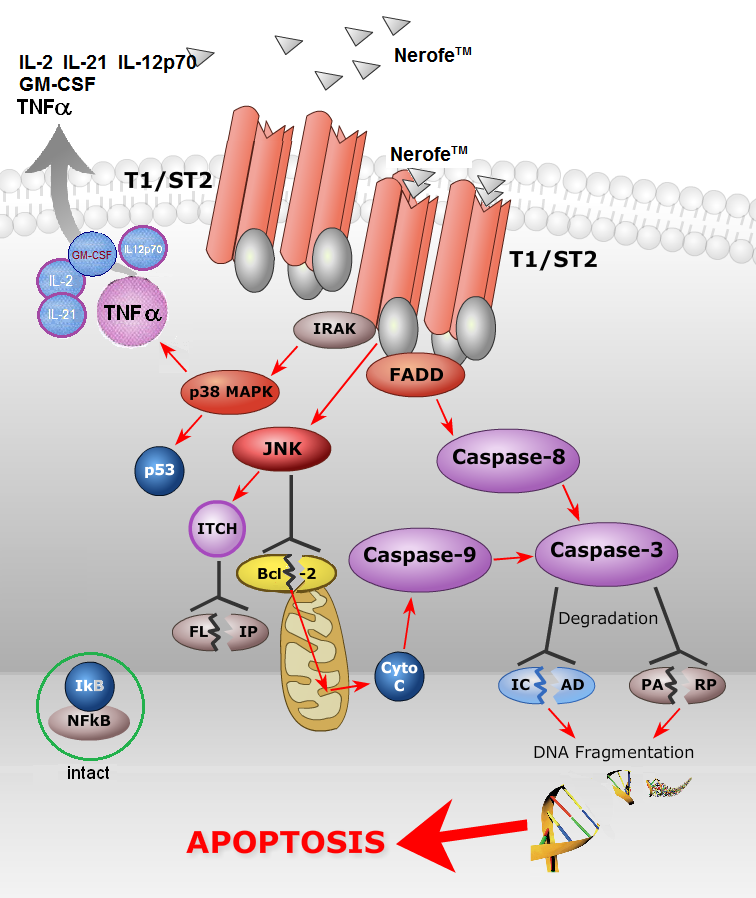Our team has utilized advanced bioinformatics tools to screen the human genome. This has led us to discover a new Tumor Cell Apoptosis Factor, which we’ve named Nerofe. Nerofe is encoded by a specific sequence found in chromosome 10, resulting in an 84 amino-acid protein with a signal peptide sequence at its N-terminus.
We’ve also identified an analogous sequence in chromosome 19 of the mouse genome. Our research shows that this new cDNA is primarily expressed in the thymus, with partial expression in the colon and the frontal lobes of the brain.
Nerofe has been identified as the natural ligand of the T1/ST2 receptor, which selectively targets proliferating cancer cells. The properties of the peptide, including its predicted secondary structure, size, solubility, and compactability, suggest that it is likely a novel hormone-peptide.
Our studies have demonstrated that when Nerofe binds to the T1/ST2 receptor, it triggers apoptotic pathways mediated by both Caspases 8 and Bcl-2. Interestingly, Nerofe does not induce apoptosis in non-proliferating cells. We believe that the selectivity of Nerofe-induced apoptosis is linked to the level of T1/ST2 receptor expression, which is overexpressed in several types of cancer and inflamed cells.
Furthermore, we have shown that Nerofe can inhibit angiogenesis. It does this by suppressing the expression of the VEGFA and VEGFR1 receptor, while enhancing the expression of the anti-angiogenic interleukin, IL-10.

Reference
NEROFE–a novel human hormone-peptide with anti-cancer activity

